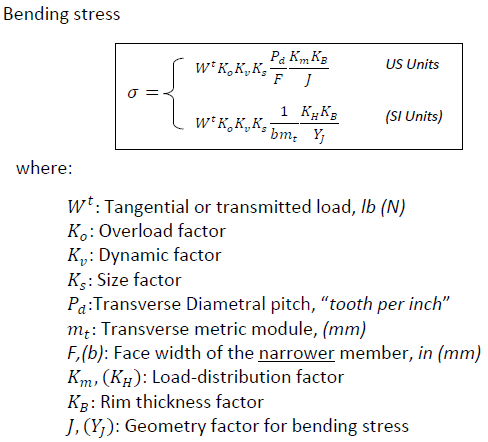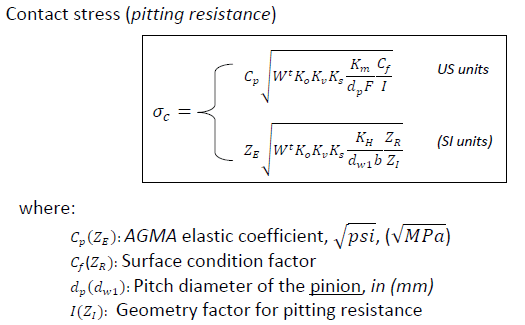Hi,
I'm a mechanical engineering intern who has been assigned a job that requires me to determine the power rating of pinion + girth gearset for a ball mill, because a more powerful motor is going to be added (so the mill can have a higher throughput).
I've been reading up on the two fundamental AGMA equations in the links below:


(For reference, these screenshots are taken from the document I found in
My thought process is I would solve for the tangential load in both cases, with the bending and the contact stress set as the yield strength of the material the gears are made from. After I've solved for the tangential load, I would be able to work out the torque on the gears, hence I would be able to figure out the maximum power the gears can withstand before failing (since I know their rotational speeds).
Is this a correct thought process?
Any feedback would be much appreciated.
I'm a mechanical engineering intern who has been assigned a job that requires me to determine the power rating of pinion + girth gearset for a ball mill, because a more powerful motor is going to be added (so the mill can have a higher throughput).
I've been reading up on the two fundamental AGMA equations in the links below:


(For reference, these screenshots are taken from the document I found in
My thought process is I would solve for the tangential load in both cases, with the bending and the contact stress set as the yield strength of the material the gears are made from. After I've solved for the tangential load, I would be able to work out the torque on the gears, hence I would be able to figure out the maximum power the gears can withstand before failing (since I know their rotational speeds).
Is this a correct thought process?
Any feedback would be much appreciated.
